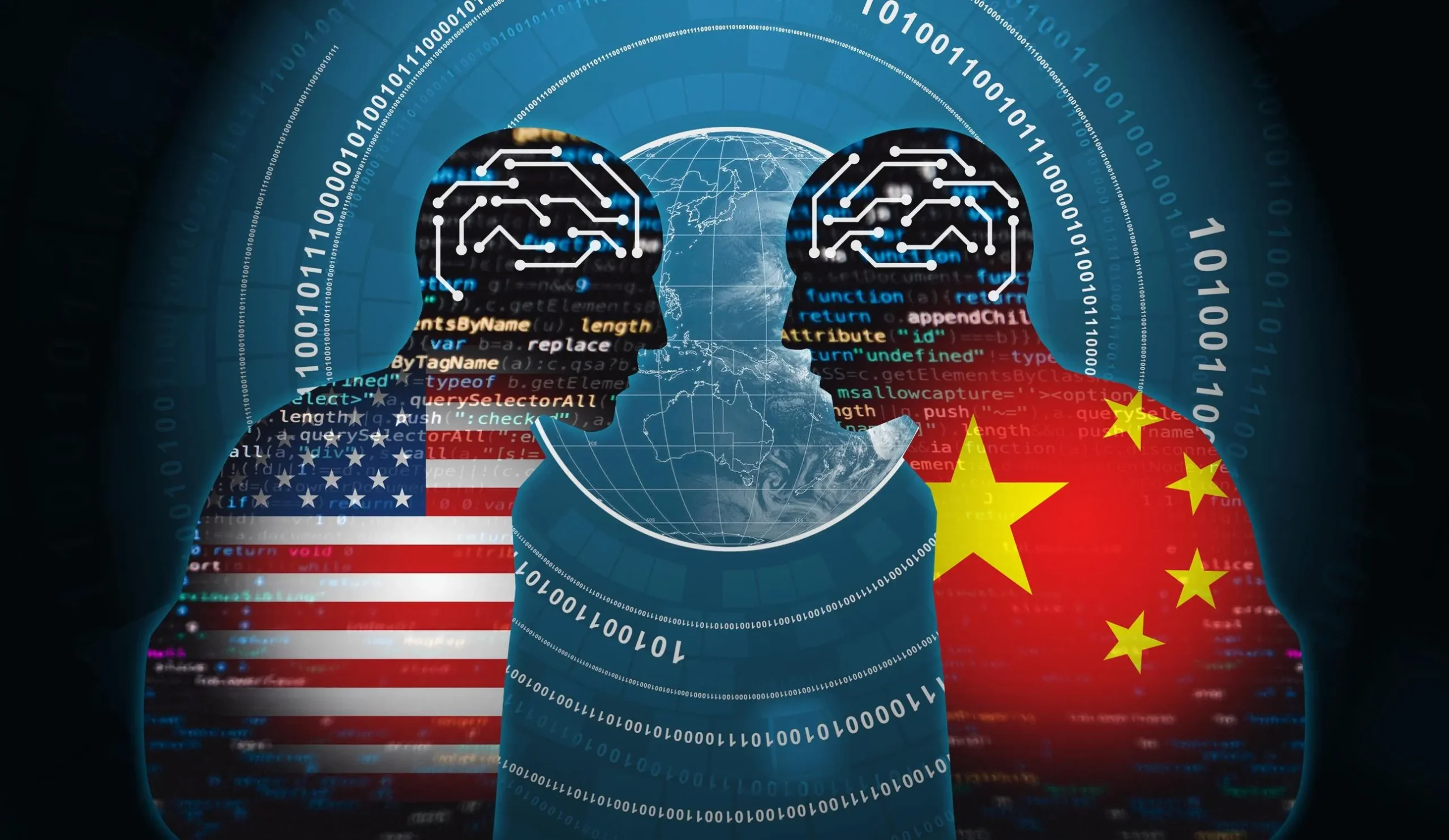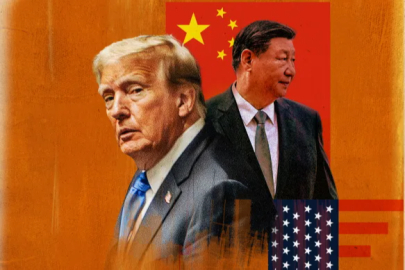A longstanding Sinophobia in the U.S. goes back to the 19th century, with the ChineseExclusion Act, the tax on Chinese miners during the Gold Rush, and the exclusion from beingable to testify in court.
Evidence of this entrenched history lingers today, in the trade sanctions against China, belligerent rhetoric from both Republicans and Democrats that led to a rash of violenceagainst elderly Asian-Americans on American streets, as well as billions of dollars spent tofortify overseas bases in preparation for a U.S.-China war.
And the refusal to cooperate meaningfully with China on anything. As a result, the U.S. is thick in the midst of an AI arms race with China that is predicated on both nations’ dangerousfaith in techno-salvation.
Thanks to the legacy of Sinophobia, it takes a whole lot to elicit an overwhelming embrace of China from average Americans, even if temporarily. But that’s what’s happened twice in thelast month. The first time was the TikTok fiasco, when millions of distraught TikTok usershad had their favorite platform snatched from them like a pacifier from a baby’s mouth. Theyfound solace not in Meta nor X (as had been the plan), but rather, in the Chinese social mediaplatform, Xiaohongshu, also known as “RedNote.”
The second instance was the debut of DeepSeek AI, which came on the heels of one of themost pompous pageants of delusional grandeur ever seen. It was Trump’s inaugurationceremony for his second term. Shortly thereafter, a press conference was held. Three techoligarchs and the president bloviated about their Stargate AI project. It would cost $500 billion. That’s what they say is needed to stay ahead of the Chinese. (For some reason, theexcuse of “staying ahead of the Chinese” seems to justify any astronomical expense.)
In the mean time, thousands of people have been left homeless due to wild fires in L.A., flooding in North Carolina, and even to this day, people from Lahaina, Maui are still withouta place to call home. But none of these Americans got a press conference.
Instead, it was the oligarchs who took the stage. Oracle’s Larry Ellison, Masayoshi Son of Starbank, and Open AI founder Sam Altman described Stargate’s plans to build clusters of gigantic data centers across the country from sea to shining sea, each one bigger than anyWalmart Superstore. It’s Manifest Destiny for data.
No one at the press conference mentioned that many of the data centers would be built on federal lands, would collectively use as much power as small European nations, requiremassive volumes of water, or would require a network of nuclear reactors. They did make thedubious promise their AI would cure cancer and heart disease. I think the guys who gotwampum for Manhattan got a better deal.
A few days afterward, as if on cue, a Chinese company called DeepSeek that no one had ever heard of dropped their bombshell. The Chinese firm had released its own AI that was open-source, used fifty times less energy, performed on par with all the American AIs, and cost a gazillion times less to produce. Suddenly, the mirage of Silicon Valley’s invincibility fadedaway to reveal an overvalued industry that had gotten too fat, lazy and full of itself toinnovate anything except marketing promises to investors. The very next day, a veritabletrillion dollars peeled like a banana off the U.S. stock exchange tech sector. The storyeverywhere was that Chinese AI had officially “caught up” with the U.S.
When people cheered the scrappy Chinese underdog, it was as much a middle finger to theoverblown hubris of the tech oligarchs as it was an embrace of Chinese innovation. It wasmotivated largely by the same class anger that rose up to lionize Luigi Mangione for killing a health insurance CEO with three inscribed bullets. People had been galled by the consolidateddisplay of the broligarchy on the dais at the Trump inauguration, similar to the royals wavingat the minions from the balcony at Buckingham Palace. Their message was unequivocal: Weown you.
DeepSeek has been described as a Robin Hood of tech, taking from the rich to give AI to thepoor. Sentiments of class anger buoyed admiration for the unknown company from China. They disregarded, for once, the stubborn stains of Sinophobia.
What was also overlooked in the midst of DeepSeek’s dazzling display of stock market disruption was responsible restraint around technology. As both China and the U.S. gohurtling ever faster toward Armageddon in the race to dominate in AI, they have both boughtinto techno-utopian ideologies, lock, stock and barrel.
We should all take a deep breath and ask the question: Is accessible, open-source AI really a good thing for anyone? Journalist Kurt Cobb reflects on a few of the potential hazards in thepost-DeepSeek world:
“We can now add “personal” AI to my list of individual ‘empowerment’ that already includesdo-it-yourself genetic engineering; do-it-yourself drones (good for anonymous surveillance, property destruction and murder); do-it-yourself designer viruses (to which we humans haveno immunity) using a combination of AI and synthetic biology; and 3D printing for guns andammunition.”
These scenarios remind us that AI was designed as a weapon of war, with a capacity for massdestruction on par with a nuclear weapon. But unlike the apocalyptic result of a single nuclearbomb, the annihilation of AI plays out in piecemeal, and in a thousand different ways. Biological weapons and killer robots are just two. And because DeepSeek is open-source, everyone now has the “opportunity” to contribute, at no cost, to the apocalypse.
China and the U.S. are entangled in a geopolitical rivalry, with existential stakes. Sure, it’ssatisfying to enjoy the smarting blow that newcomer DeepSeek landed to the capitalistGoliath — China one, U.S. zero. But it’s not a boxing match. Such narrow framing loses sightof the fact that the race for accessible AI is a race for Mutually Assured Destruction (MAD).
Yoshua Bengio, co-winner in 2018 of the Turing Award, and considered one of the“godfathers of AI,” has warned against falling into the Moloch’s den of an AI race:
“If you imagine a competition between two entities and one thinks they’re way ahead, thenthey can afford to be more prudent and still know that they will stay ahead,” Bengio said. “Whereas if you have a competition between two entities and they think that the other is justat the same level, then they need to accelerate. Then maybe they don’t give as much attentionto safety.”
Some might argue that innovations such as DeepSeek’s energy-efficient AI might mitigate thedangers brought by laissez-faire deregulation. The thinking is, by encouraging innovations, problems will take care of themselves. For example, the release of DeepSeek would derail theneed for the massive Stargate project to build energy-guzzling data centers. Isn’t that a goodthing?
Microsoft CEO Satya Nadella is not a believer. It’s no surprise, since corporate CEOs’ mantrais “growth at all costs.” Nadella pointed to Jevon’s Paradox: basically when things get moreefficient and prices fall, we use more of it, not less.
Her logic reminds me of when the Berlin Wall fell and naive folks like myself believed thatthe war budget would shrink and bases would close since there was no more Cold War todefend against or arms race to compete against. Fat chance. The weapons industry wouldn’ttolerate the thought of degrowth, just like Microsoft, Google, Meta, Amazon et al. can’t bearit today. The war industry dealt with it by instead aggressively manufacturing enemies andreasons for war faster than it could manufacture more weapons. Now, forty years after the endof the Cold War with Russia, the war budget has increased every year and is now up to onetrillion dollars, Los Alamos has begun manufacturing nukes for the first time in decades lastyear, we’ve got 800 bases around the world, rocket launchpads in wilderness areas, andthousands of satellites in the heavens.
It’s hard to get one’s bearings, especially in the midst of the engineered political maelstrom of the current moment. Fortunately, the books haven’t been burned (yet), so we can turn to thethinkers of the recent past for guidance.
The technology critics of the 20th century, such as Jacques Ellul, Lewis Mumford and ChellisGlendinning, urged us to conceptualize technology not just as a single artifact, such as a laptop, or just AI, or just a satellite, or just a nuclear weapon, but rather, as a whole way of thinking, a way of organizing society, our institutions, a way of being. Technology is not a one-off. It is systemic. Lewis Mumford called all of our technological society theMegamachine.
Every project, technology, organization, and endeavor is an expression of the Megamachinewhere the economic-growth imperative reigns supreme. It is all of a piece. It doesn’t matter ifDeepSeek uses less energy. The growth imperative must be met. In fact, Jevon’s Paradoxserves as a corrective force to satisfy this internal logic.
Likewise, it doesn’t matter if the U.S. has no real enemies. The military industrial complexmust continue to unceasingly grow, according to the logic of the Megamachine. It will inventenemies in order to justify that growth. That’s why we now have thousands of nuclear bombsand a sprawling, AI-driven, globally networked satellite and base infrastructure that encasesthe Earth like an iron maiden.
The poster child for the Megamachine in the digital age is Amazon. Former chair of theFederal Trade Commission Lina Khan’s seminal essay “Amazon’s Anti-trust Paradox,” tracksthe logic of the behemoth’s growth over its history. She brilliantly unravels how Amazon decisively prioritized sheer growth over profit for its first eight years. The goal was toentrench a broad-spanning networked infrastructure that would guarantee a monopoly andcontinue to consolidate market dominion. They forwent profits for almost a decade expresslyin order to monopolize the market. Again, the imperative for growth and global dominationtrumps decent common sense.
Through the lens of the Megamachine, the U.S. and China are far more alike than different. To be sure, the two powers are rooted in cultures that bear little resemblance to one anotherand the extreme poverty of the U.S. has no equivalent in China. However, over the course of the last thirty years of globalization and digital entrenchment, China has become capitalisticand the U.S. has become autocratic. Techno-utopianism is the preeminent ideology veneratedby both superpowers.
The U.S. and China both fetishize AI and aggrandize consumerism. Both are obsessed withprojects to mechanize agriculture, engineer biology, geology and all of Nature, and evencreate synthetic life forms. The terms upon which the Great Powers Competition is played byboth national economies is through the extraction of resources from the natural world in orderto create wealth, constant growth, development and technological innovation. From MotherEarth’s perspective, China and the U.S. are about as un-different from one another these daysas the two American baseball teams that square off every year at the World Series.
Ironies abound. Both sides use the technology to gain a competitive advantage, but then thetechnology homogenizes the cultures into one. The competitors become reflections of oneanother.
I’m reminded of a remark that I’ll never forget from an indigenous friend. She said, “Thecapitalist builds a hydroelectric dam on a river to generate profit for himself. The communistsbuild a dam on a river to generate electricity for themselves. The indigenous believe thatindustrial-scale electricity that destroys a riparian ecosystem is not worth it.”
Ultimately, a race for superior technology is a joke. For one thing, the collapsing Americanempire can never win a competition against a well-organized adversary with a population of one and a half billion, a dynamic education system, and a thriving manufacturing base. That’sjust a fact.
The sooner that the U.S. and China treat one another as fellow members of humankind, ratherthan adversaries, the real work of cooperation can begin. Both nations are home to millions of indigenous peoples who carry the know-how for surviving and thriving for generations intothe future. Their wisdom is more precious than any AI. There’s no shortage of problems thatour combined brilliance can improve if not solve: climate, nuclear weapons, speciesextinction, toxic waste clean-up, housing, microplastics, and last but not least, dangerousunregulated technologies. None of these colossal crises can be addressed as long as we arepointing fingers while locked in the downward spiral of a competition for global hegemonythat the U.S. can never win.
Some of us remember the shining moment in history when the U.S. and Soviet Union builttrust and signed a raft of nuclear arms control agreements. They modeled what ratchetingdown tensions and the path to peace looks like. It would behoove the U.S. and China tofollow their lead today, not only with nukes but also with AI and other emergingtechnologies.






